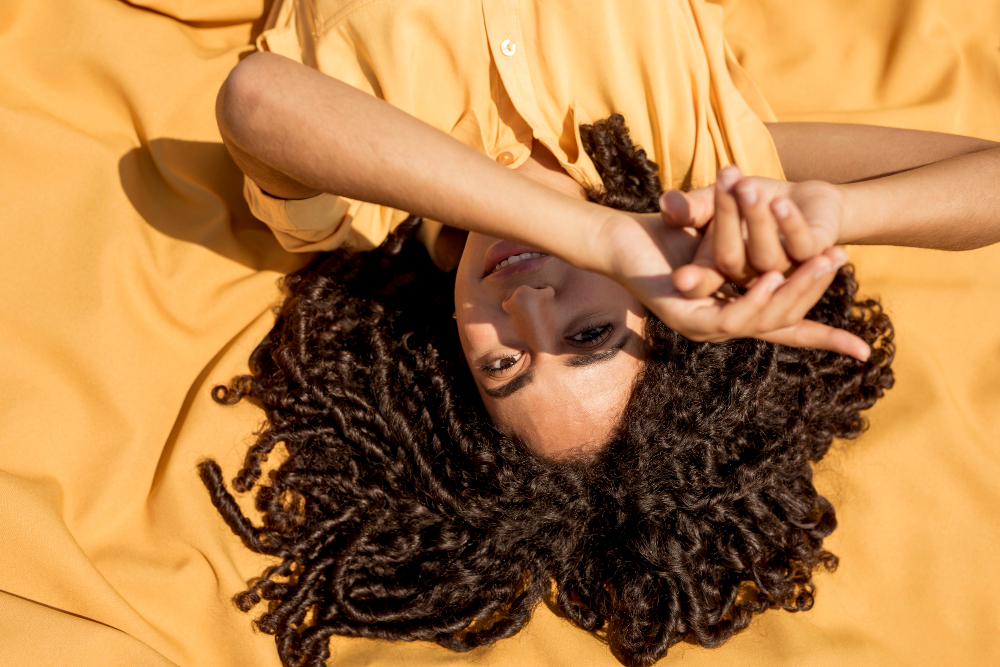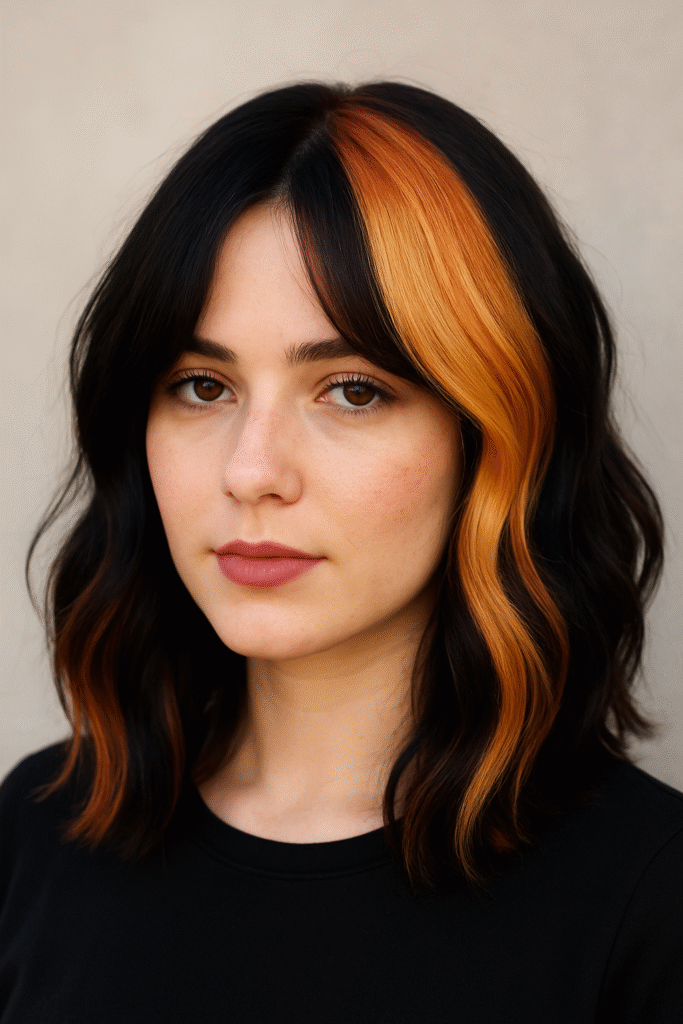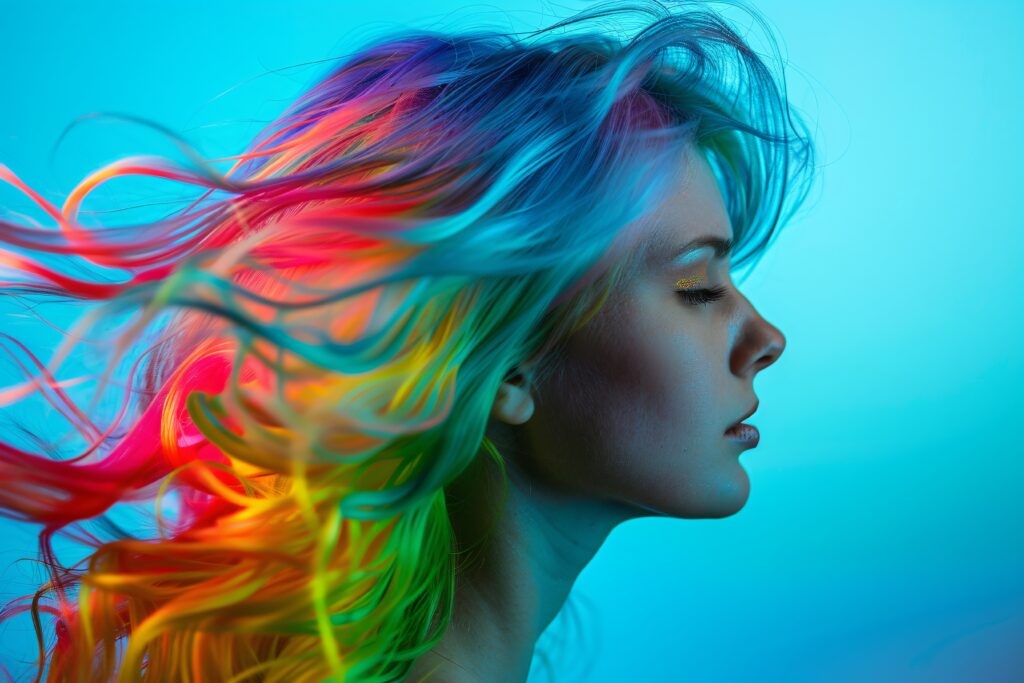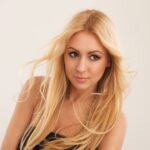Choosing between single process and double process color can feel confusing. We often hear about balayage, highlights, and shadow roots, but what does it mean when your stylist mentions a single or double process? And more importantly, which is right for you?
At Haste Hair, we love making color terms easier to understand, so you can walk into your appointment confident and excited. In this guide, we’ll explain the difference between single-process and double-process color, share examples, discuss hair health and maintenance, and explore alternatives like balayage and highlights.
👉 By the end, you’ll know which service fits your lifestyle, hair goals, and budget.
Single Process And Double Process Color: What’s The Difference?

What is Single Process Hair Coloring?
A single process color is any hair coloring service we can achieve in one step. Think of it as the simplest way to refresh or transform your look. It can involve:
- An all-over permanent color to darken or lighten your base shade
- Gray coverage for natural-looking vibrancy
- A root touch-up to keep your color seamless
- Subtle highlights or lowlights that don’t require toning
✨ Tip: Single-process color is usually quicker, more affordable, and gentler on your strands compared to multiple-step services.
Popular Single Process Color Ideas

- Chocolate Brown – Rich and warm, great for brunettes who want depth without drastic change.
- Espresso Lowlights – Adds dimension in a single step, especially flattering on naturally dark bases.
- Dirty Brunette – A trendy, low-maintenance blend of golden blonde accents and brown tones.
- Black Sapphire – Sleek, all-over blue-tinted black that adds instant drama.
- Honey Blonde – Warm highlights that often don’t need toner, depending on your starting color.
👉 Curious how single process compares to balayage? Check out our guide on balayage vs highlights.
What is Double Process Hair Coloring?

A double process color involves two steps in one session. First, we will lighten your hair (usually through bleaching), then apply a second color, toner, or gloss. This technique is often used for dramatic changes, fashion shades, or ultra-light blondes.
Because it’s more complex, the double process usually requires more time, expertise, and aftercare.
✨ Tip: Double process is perfect if you dream of platinum blonde, pastels, or bold shades, but it needs commitment for maintenance. Additionally, learn more about the process of hair coloring.
Popular Double Process Color Ideas

- Pastel Shades – Pink, blue, or lavender tones that require pre-lightened hair to shine.
- Chocolate Lilac – A brunette base with bleached sections for lilac tones.
- Mushroom Brown – Ashy, cool-toned browns created with toner after lightening.
- Coral – Vibrant and fun, achieved by bleaching first and then adding coral pigment.
- Platinum Blonde – The ultimate icy blonde, requiring multiple lightening sessions plus toner.
Key Differences: Single Process vs Double Process

| Feature | Single Process | Double Process |
|---|---|---|
| Steps Involved | One | Two or more |
| Best For | Gray coverage, subtle shade changes, natural refresh | Dramatic transformations, platinum, bold shades |
| Time Needed | Shorter appointment | Longer appointment |
| Cost | More affordable | Higher investment |
| Hair Impact | Gentler | More chemical stress, needs aftercare |
👉 Want to explore color techniques beyond these two? Learn more about balayage for curly hair.
Hair Health & Maintenance
- Single Process: Generally lower maintenance, retouches every 4–6 weeks for gray coverage or root refresh.
- Double Process: Requires regular toning, purple shampoo, and deep conditioning to maintain hair health and color vibrancy.
💡 Tip: Always follow with professional-grade aftercare. See L’Oréal Paris Permanent Hair Color Guide for color-safe product tips.
Alternatives to Consider

If neither single nor double process feels right, you might love:
- Balayage – Hand-painted highlights for a natural, low-maintenance look. (Read more)
- Highlights – Classic, dimensional brightness without full coverage.
- Glosses & Glazes – Add shine and tone without long-term commitment.
Choosing the Right Hair Color Service
Both single process and double process color have their place. If you want quick, affordable, and subtle, go single. If you’re ready for bold transformations or platinum perfection, go double.
The best way to decide? Talk with a professional colorist. At Haste Hair, we’ll help you create a plan that keeps your hair healthy and gorgeous.
👉 Book your hair coloring consultation today.
FAQ
What is the difference between a single and a double process?
A single process involves a single coloring step, whereas a double process includes two steps: usually, bleaching followed by toning or adding color.
Does a single process damage hair?
When done professionally, a single process is generally safe and less damaging than a double process. Proper aftercare is still essential.
Can a single process lighten my hair?
Yes, but only by a few shades. For dramatic lighting, you’ll need a double process.
How often do I need to maintain each process?
Single process: every 4–6 weeks. Double process: every 3–4 weeks plus toning treatments.









